
The World Health Organization is warning the number of cases of COVID-19 caused by coronavirus is approaching 100,000 worldwide, with more than 3,100 deaths due to the illness. Most of the deaths and infections have occurred in China, where health officials reported 139 new cases and 31 new deaths recently.
South Korea confirmed 438 new cases, making their total number of confirmed cases over 5,700. Italy has over 3,000 confirmed cases and more than 100 deaths have been reported. Officials have closed down schools in Italy, South Korea, Japan, France, Pakistan, Iran and elsewhere, with nearly 300 million children kept home from school worldwide.
In the United States, there are now more than 300 confirmed cases and the death toll has reached 11 — with 10 of the deaths occurring in Washington state. California recorded its first coronavirus death: an elderly man who traveled on a Princess cruise ship that departed from San Francisco and traveled to Mexico in February. Governor Gavin Newsom has ordered the ship quarantined off the coast of California and is airlifting tests for passengers and crew. Governor Newsom made the announcement as he formally declared a state of emergency across California.
The CDC issued new guidance for clinicians on screening patients for novel coronavirus and assessing their risk for infection. The agency also started shipping its coronavirus assay to labs across the U.S. and in other countries. According to the US Centers for Disease Control and Prevention, 13 states in the US have reported confirmed or presumptive positive cases of COVID-19. Washington State has the highest number of cases with 70 confirmed illnesses and 10 associated deaths. California has 60 positive cases and 1 death.
Of the confirmed cases in California, 42 of them are linked to repatriation or international travel. Cases are rising rapidly in New York, where there are 22 confirmed cases across the state with an additional 24 testing results pending, and 122 individuals under investigation. In response to the rise in cases, the US Senate passed an $8.3 billion bill to fight the outbreak. This came just a day after the bill was approved by the House of Representatives. More than $3 billion is expected to be put into research and development of treatments, vaccines, and testing.
Read more
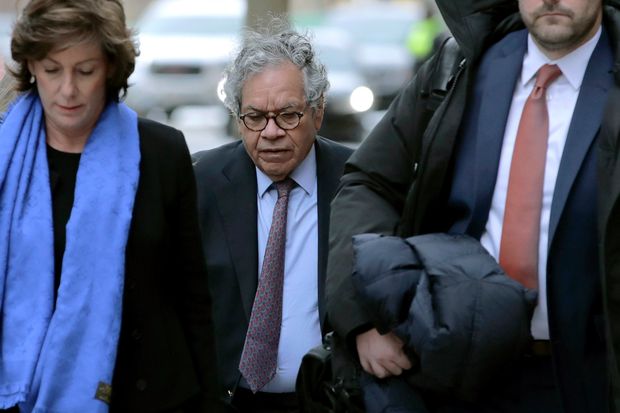
Former billionaire and pharmaceutical executive John Kapoor has been sentenced to five years and six months in prison. His sentencing is the first successful prosecution of a pharmaceutical executive tied to the opioid epidemic. The 76-year-old is the founder of Insys Therapeutics, which made and aggressively marketed the potent opioid painkiller Subsys. Kapoor’s 66-month prison term is substantially less than the 15-year sentence recommended by federal prosecutors, but it is more than the one year requested by his defense attorneys. U.S. District Judge Allison Burroughs explained that she reached the lesser sentence after considering Kapoor’s advanced age and philanthropy, as well as “his central role in the crime.”
Kapoor and four other executives were found guilty last year of orchestrating a criminal conspiracy to bribe doctors to prescribe the company’s medication, including to patients who didn’t need it. They then lied to insurance companies to make sure the costly oral fentanyl spray was covered. The painkiller, which was intended for cancer patients, could cost as much as $19,000 a month. An investigative report found at least 908 deaths in which Subsys is a primary suspect. The company entered into an agreement with the government to settle criminal and civil investigations. Insys admitted to the kickback scheme and agreed to pay $225 million. Shortly after the agreement was announced the company filed for bankruptcy.
Two other executives pled guilty and became cooperating witnesses. Former CEO and President of Insys Therapeutics was sentenced in federal court for bribing practitioners to prescribe Subsys, a fentanyl-based pain medication, often when medically unnecessary. Approved by the FDA only for cancer pain, doctors receiving kickbacks, prescribed the spray for routine back pain, migraines and other ailments.
Michael Babich, 43, of Scottsdale, Ariz., was sentenced to 30 months in prison, three years of supervised release, and ordered to pay restitution and forfeiture to be determined at a later date. In January 2019, Babich pleaded guilty to one count of conspiracy to commit mail fraud and wire fraud and one count of mail fraud, and agreed to cooperate with the government. Insys sales chief Alec Burlakoff was sentenced to 26 months in prison for his role in the bribery and fraud scheme. The sales executive hired a stripper as a Subsys sales representative to help persuade doctors to boost prescriptions. The woman, named Sunrise Lee, eventually was promoted to oversee a third of the company’s sales force. She was sentenced to one year in prison for her role in the scheme.
Read more
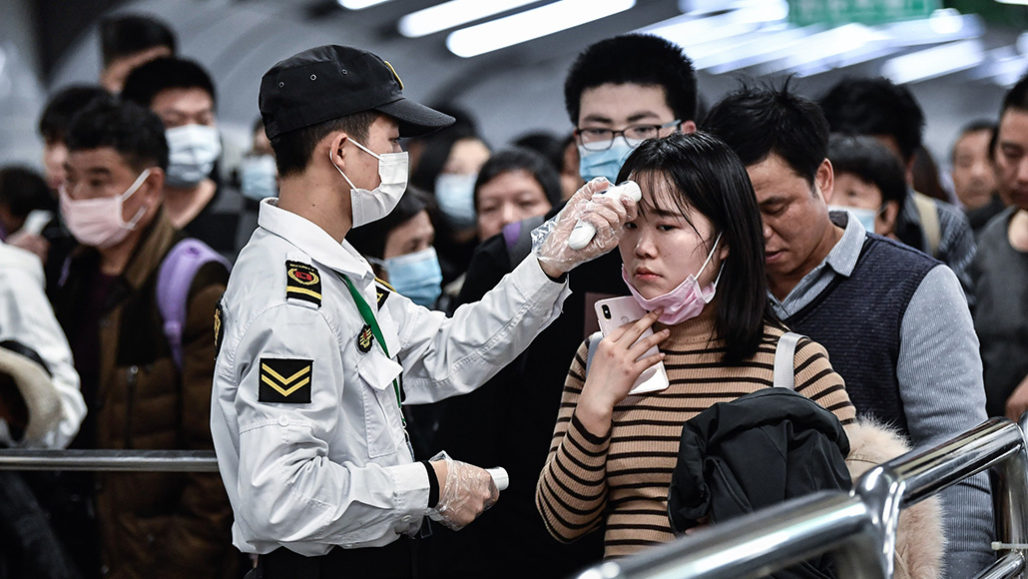
As the outbreak of the mysterious new coronavirus rapidly spreads, the Chinese authorities said that the official count of known cases jumped again overnight, with the death toll now exceeding 400. According to the National Health Commission, the number of confirmed cases increased to over 20,000 but a shortage of test kits has led experts to warn that the real number may be higher.
Officials also announced that after repeated offers of assistance, Chinese authorities agreed to allow in teams of international experts, coordinated by the World Health Organization, to help with research and containment. Government scientists as well as those working at Johnson & Johnson, Moderna Therapeutics and Inovio Pharmaceuticals are all working quickly to develop a vaccine. Hundreds of Americans have been evacuated from Wuhan, the epicenter of the virus, but some of their family members without U.S. visas have been left behind. British Airways has suspended all flights in and out of China.
The U.S. government declared a public health emergency last week and barred foreign nationals from entering the country within two weeks of visiting China, unless they are immediate family members of U.S. citizens or permanent residents. The State Department has warned Americans against all travel to China, and is planning more evacuation flights to bring Americans home from the country this week. Those flights will land at four U.S. military bases, and similar to the evacuation flight that landed in California last week, passengers will be placed under federal quarantine for 2 weeks. The planes will be loaded with medical supplies and humanitarian goods, which the U.S. hopes to deliver to Wuhan on the first leg of the journey.
The head of the World Health Organization Ghebreyesus said some nations are lagging in the global fight against the deadly new coronavirus outbreak. WHO director-general Tedros Adhanom Ghebreyesus accused some governments of wealthy countries of being “well behind” in sharing data on virus cases. “While 99 percent of cases are in China, in the rest of the world we only have 176 cases,” Tedros said in a technical briefing to the WHO’s Executive Board in Geneva. “That doesn’t mean that it won’t get worse. But for sure we have a window of opportunity to act… Let’s not miss this window of opportunity.”
Read more

On Sunday, January 26th, nine people were killed in a helicopter crash in Casablancas California. The crash claimed the lives of basketball ball legend Kobe Bryant and his 13 year old daughter Gianna. The other crash victims were identified as John Altobelli, 56; Keri Altobelli, 46; Alyssa Altobelli, 13; Sarah Chester, 45; Payton Chester 13, Christina Mauser, 41 and the 50 year old pilot, Ara Zobayan. The private helicopter was headed to the Lady Mambas’ basketball game at Bryant’s Mamba Sports Academy in Thousand Oaks where Gianna was scheduled to play and Kobe scheduled to coach.
Minutes before the crash, the pilot was trying to get special permission to fly though foggy conditions. Just seconds before the crash, the pilot told air traffic control he was trying to avoid a cloud layer. It was the last time anyone on the ground heard from him. While federal investigators try to determine what caused the crash, excerpts of air traffic control recordings will help build a timeline of what happened in the final moments of the Sikorsky S-76B helicopter before it crashed into the hillside. Meanwhile, the nation is mourning alongside the families of those lost in the crash.
Kobe and Vanessa Bryant were married for 19 years before the basketball star’s sudden death. They shared four daughters, Gianna, 13, was the second oldest. Left behind are Natalia Bryant, 17; Bianka Bryant, 3 and Capri Bryant, 7 months old.
Passengers’ relatives and loved ones are telling their stories. Christina Mauser was an assistant basketball coach at Mamba who had been personally selected for the job by Kobe Bryant, her husband, Matt Mauser. Both Matt and Christina were teachers working at a small private school that Bryant’s daughters attended. Christina left behind three children ages 11, 9 and 3.
John Altobelli was a respected baseball coach, a man who treated his players like family and was known as “Coach Alto.” Altobelli’s daughter Alyssa, was best friends with Kobe’s daughter Gianna and also loved playing basketball for the academy. Keri Altobelli was described as a great mom to the couple’s children. They have two surviving children, a daughter Lexi, in high school, and J.J., who is in his 20s. Payton Chester, a 13-year-old basketball player, and her mother, Sarah, were also passengers on the helicopter. They are survived by husband and father Chris and two boys Hayden and Riley, both 16.
Read more

Amazon is facing backlash over its Ring home security camera and “smart home” product after a data leak exposed the personal information of over 3,000 users. The data breach included emails, passwords and other sensitive information that would allow hackers to access live camera footage from inside every room of people’s homes. This leak could potentially provide criminals and stalkers with access to view live video feeds from inside and around thousands of Ring customers’ homes, see archived videos, and get the precise location of all Ring devices attached to the compromised account by studying the orientation of the footage and location information attached to each camera.
Using the log-in email and password, an intruder could access a Ring customer’s home
address, telephone number, and payment information, including the kind of card they have, and its last four digits and security code. An intruder could also access live camera footage from all active Ring cameras associated with an account, as well as a 30- to 60-day video history, depending on the user’s cloud storage plan.
Ring has claimed that this attack was the result of credential stuffing, a technique where
attackers gather usernames and passwords compromised in another data breach and try them on other websites. “Ring has not had a data breach. Our security team has investigated these incidents and we have no evidence of an unauthorized intrusion or compromise of Ring’s systems or network,” the spokesperson said. “It is not uncommon for bad actors to harvest data from other company’s data breaches and create lists like this so that other bad actors can attempt to gain access to other services.”
The Ring spokesperson added that the company will notify customers who were affected and require them to reset their passwords. Ring does not alert users of attempted log-in from an unknown IP address, or tell users how many others are logged into an account at one time. Because of this, there is no obvious way to know whether any bad actors have logged into people’s compromised Ring accounts without their consent.
This data leak is the latest in a string of incidents involving compromised Ring accounts. The home surveillance camera company was acquired by Amazon in 2018 and has been targeted by hackers who used the cameras to harass children and families while documenting their actions on podcast livestreams. In November, cybersecurity company BitDefender published a white paper describing a now-resolved vulnerability that allowed hackers to physically intercept communications between Ring Video Doorbell Pros and a person’s Wi-Fi network.
The company has also received criticism when it was revealed that over 700 police departments in the US have signed contracts with Ring. These contracts give police access the company’s law enforcement portal, which allows police to request camera footage from residents without receiving a warrant. In exchange, Ring often gives police free cameras, and it offers police more free cameras if they convince enough people to download its neighborhood watch app, Neighbors. In October, a group of 30 civil rights groups published a joint letter demanding that law makers stop the police partnership, calling it a threat to civil rights and liberties.
Read more
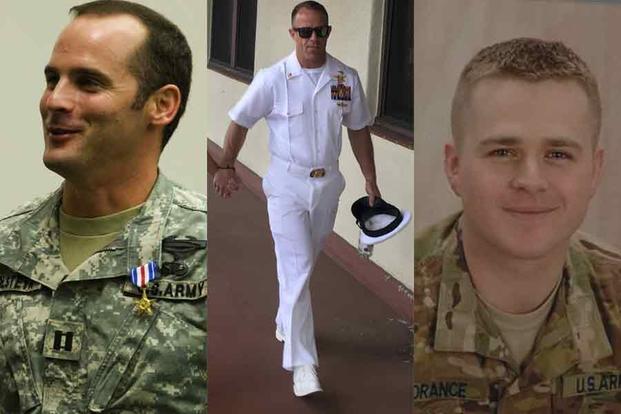
The administration has granted clemency to three controversial military figures embroiled in charges of war crimes, arguing the moves will give troops “the confidence to fight” without worrying about potential legal overreach. Army 1st Lt. Clint Lorance, convicted of 2nd degree murder in the death of two Afghans, was given a full pardon. Army Maj. Mathew Golsteyn, who faced murder charges for a similar crime, was also given a full pardon for those alleged offenses. Special Warfare Operator Chief Edward Gallagher, who earlier this year was acquitted of a string of alleged war crimes, had his rank restored to Chief Petty Officer.
Critics have warned the pardons could send the message that troops need not worry about following rules of engagement when fighting enemies abroad. Lorance’s case dates back to a 2012 deployment to Afghanistan, when he ordered his soldiers to fire on three unarmed men riding a motorcycle near their patrol. Members of his platoon testified against him at a court-martial trial, describing him as over-zealous and the Afghans as posing no real threat. He was sentenced to 19 years in prison at Fort Leavenworth, Kansas.
Golsteyn’s case had not yet been decided, with a scheduled trial date in December on charges he murdered an alleged Taliban bomb maker, and burned his remains in a trash pit during a 2010 deployment with 3rd Special Forces Group. Golsteyn, an Army Green Beret major, had pled not guilty to murder and related charges. His pardon effectively puts an end to that legal case before any verdicts were rendered.
While Gallagher was acquitted of murder and obstruction of justice charges in July, a panel of his peers recommended he be reduced in grade for posing with the body of the teenaged detainee, a crime he never denied. His rank was restored with the pardon but the Navy plans to remove Chief Gallagher from the elite SEAL team despite the pardon. It’s been reported that several top military officials threatened to resign if Navy officials did not move forward with these plans despite the pardon.
Chief Gallagher was accused of multiple offenses during his final deployment to Iraq and during the Battle for Mosul. The most prominent and disturbing accusation was the murder of a prisoner of war, a war crime. A captured young ISIS fighter was being treated by a medic. According to two SEAL witnesses, Gallagher said over the radio “he’s mine” and walked up to the medic and prisoner. Without saying a word to the medic or prisoner, Gallagher killed the prisoner by stabbing him repeatedly with his hunting knife. Gallagher and his commanding officer, Lieutenant Jake Portier, then posed for photographs of them standing over the body with some other nearby SEALs. Gallagher then text messaged a fellow SEAL a picture of the dead captive with the explanation “Good story behind this, got him with my hunting knife.”
Gallagher was also accused of being indiscriminate, reckless and bloodthirsty during his 2017 deployment. Fellow snipers did not consider him to be a good sniper because he would allegedly take random shots into buildings and indiscriminately spray neighborhoods with rockets and machine gun fire with no known enemy force in the region. Several snipers testified that they witnessed Gallagher taking at least two militarily pointless shots, shooting and killing an unarmed old man in a white robe as well as a young girl walking with other girls. Gallagher was allegedly known for boasting about the large number of people he had killed, claiming he averaged three kills a day over 80 days, including four women.
Read more
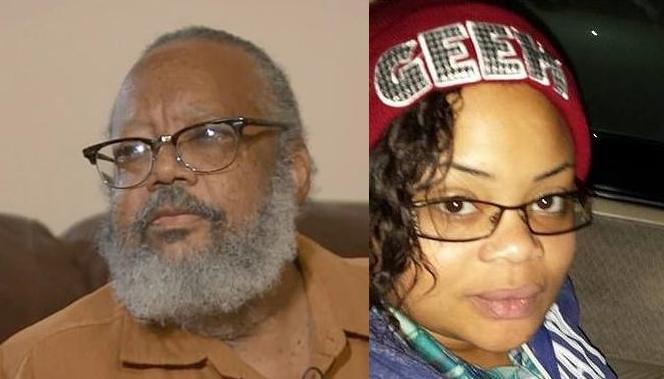
The father of Atatiana Jefferson has died, less than one month after a police officer killed his 28-year-old daughter by shooting through the bedroom window of her own home. Atatiana’s father, Marquis Jefferson, 59, died after suffering a heart attack. The family spokesman said, “I can only sum it up as a broken heart.” Atatiana was his only child and she was killed exactly one month ago, on October 12, by police officer Aaron Dean. The spokesman, Bruce Carter, said Jefferson had been under a lot of stress since his daughter was killed and was also battling Chronic Obstructive Pulmonary Disease, which makes breathing difficult.
Jefferson had been embroiled in a family dispute involving his daughter’s funeral and burial arrangements, which were controlled by her aunt, Bonita Body. He argued that as the surviving parent of Atatiana, he should have control of her burial, and was granted a temporary restraining order to postpone the funeral. The service eventually took place on October 24. “He was battling to be a part of her life to the end,” Bruce Carter, the family’s spokesperson, said. “I think it just got the best of him.”
Lee Merritt, attorney for Atatiana Jefferson’s family, said in a statement they were saddened to learn the news about Marquis Jefferson and “of course” the loss his daughter factored into his death. “Her death rocked the nation but no one felt it more than the people that were directly tied to her in life,” Merritt said. “Those people haven’t had a chance to grieve like normal families. They have been thrust into a very public, very emotional, very draining fight for justice.”
On October 12, at around 2:30 a.m., Dean had arrived at Atatiana’s Forth Worth residence with another officer in response to a non-emergency “wellness check” called in by a neighbor who noticed Atatiana had left her front door open. Atatiana was playing video games with her 8-year-old nephew when she heard noises outside of her home. According to her nephew, she took her handgun from her purse and pointed it “toward the window” just before getting shot by Dean. The two men did not identify themselves as police when they approached the window where Atatiana stood.
Body camera footage showed Dean looked inside a window using a flashlight, spotted someone inside standing near a window and said, “Put your hands up — show me your hands.” He shot seconds later. At no point did he identify himself as an officer and he did not appear to have knocked on the door. Dean resigned from the police department shortly afterward, and was arrested and charged for Atatiana’s murder. He is currently out on a $200,000 bond.
Dean completed police training at the Fort Worth Police Academy in March 2018 and at the time of the shooting, had been with the department for 18 months. Prior to the shooting, the only entry in his Fort Worth police personnel file was about a traffic collision. Dean’s training records from his first year on the job note concerns from supervisors which included that he had “tunnel vision” and “needs improvement on communicating with the public and fellow officers.” Dean’s most recent performance evaluation was made in spring 2019, where he received high marks from a supervisor.
Read more
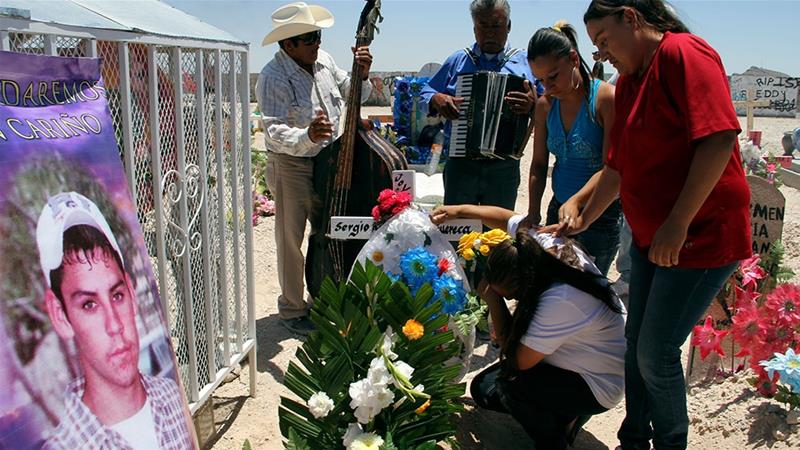
The Supreme Court began hearing oral arguments in the case of slain Mexican teenager killed by a US Border Patrol agent. The court heard arguments in the family’s appeal of a lower court’s ruling dismissing their case against the agent, Jesus Mesa, who had fired across a concrete spillway into Mexico from the Texas side of the border during the 2010 incident, striking 15-year-old Sergio Adrian Hernandez Guereca in the face.
The incident took place in June 2010 on the border between El Paso and Ciudad Juarez in Mexico. The Border Patrol said at the time Hernandez was pelting U.S. agents with rocks from the Mexican side of the Rio Grande when he was shot. Witnesses say Sergio and his friends were playing a game of chicken where they would run up the embankment, touch the barbed-wire fence on the U.S. side, and then sprint back. As they were playing, smugglers were nearby, throwing rocks at U.S. Customs and Border Protection agents. At some point, Agent Jesus Mesa, Jr. showed up on a bicycle and detained one of Sergio’s friends. Sergio ran back into Mexican territory and hid behind a bridge pillar. Standing on U.S. soil, Agent Mesa fired at least two shots across the border at Sergio, striking him in the face and killing him.
Following Sergio’s death, his parents, Jesus Hernandez and Maria Bentacour, sued the United States government, Agent Mesa, and Mesa’s supervisors. Their attorneys argue that Sergio—despite being a Mexican national—was nevertheless protected by the Fourth and Fifth Amendments, since he was killed by a federal officer who fired from American soil. The U.S. Department of Justice investigated the shooting but decided in 2012 it was “a reasonable use of force or would constitute an act of self-defense.” Federal prosecutors refused to indict Mesa. The Mexican government, on the other hand, charged Mesa with murder, but the United States won’t extradite Mesa so he can face trial.
With criminal prosecution off the table, Sergio’s family sought justice through a civil lawsuit. During arguments, liberal justices expressed concerns over providing no legal relief to the families of people who have been killed in cross -border shootings by U.S. agents, essentially allowing federal officers on American soil to act unlawfully with impunity. During the arguments, conservative justices appeared to lean toward the administration’s concerns while liberal justices voiced worry about leaving individuals with no way to hold federal officers accountable for unlawful conduct. The court has a 5-4 conservative majority.
The dispute hinges on whether the family, despite Hernandez having died on Mexican soil, can seek monetary damages against what they call a “rogue” agent for violating for the U.S. Constitution’s Fourth Amendment, which bars unjustified deadly force as well as Hernandez’s right to due process under the Constitution’s Fifth Amendment. For the family’s lawsuit to move forward, the Supreme Court would have to widen the scope of its 1971 decision allowing certain suits against federal officials. That case, referred to as the Bivens action, involved a domestic search.
The high court previously considered Hernandez’s case in 2017 but did not decide the central legal question, instead directing the New Orleans-based 5th U.S. Circuit Court of Appeals to reconsider its ruling that had barred the lawsuit. The 5th Circuit last year again ruled against the family, prompting a second trip to the Supreme Court where they will again decide if the Bivens act should be extended and Mesa held accountable.
Read more
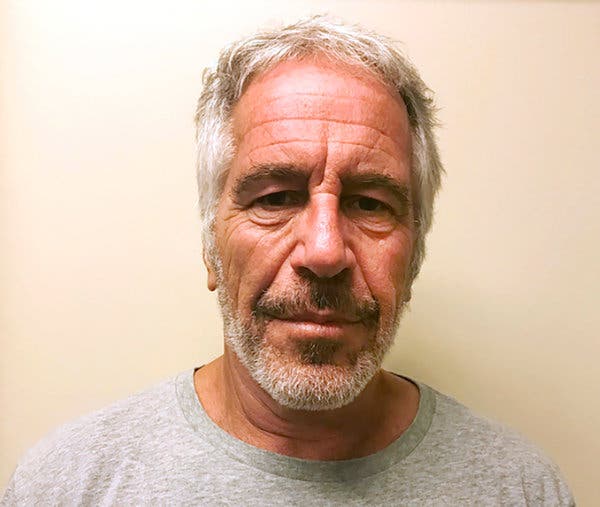
A forensic pathologist hired by the brother of Jeffrey Epstein says the injuries that killed the multimillionaire sex abuser were consistent with strangulation — not a death by suicide, as a New York medical examiner reported. Dr. Michael Baden says a broken bone in Epstein’s neck is “extremely unusual in suicidal hangings and could occur much more commonly in homicidal strangulation.” The claim by Dr. Michael Baden, a former New York City medical examiner who has worked on high-profile cases during a five-decade medical career, is certain to reignite suspicions that surfaced immediately after Epstein.
Epstein was found dead in his Manhattan jail cell on August 10th as he awaited trial on federal sex trafficking charges. Epstein once counted President Trump and former President Bill Clinton among his high-profile friends. Prosecutors alleged that the previously convicted sex offender paid girls as young as 14 hundreds of dollars for massages before he molested them in his homes in New York and Palm Beach, Fla., between 2002 and 2005. Since he was awaiting trial in federal prison, federal agencies had jurisdiction over the investigation into his death.
Baden noted that the 66-year-old Epstein had two fractures on the left and right sides of his larynx, specifically the thyroid cartilage or Adam’s apple, as well as one fracture on the left hyoid bone above the Adam’s apple. “Those three fractures are extremely unusual in suicidal hangings and could occur much more commonly in homicidal strangulation.” There were also hemorrhages in Epstein’s eyes that were common in homicidal strangulation and uncommon, though not unheard of, in suicidal hangings, the forensic pathologist said.
While there’s not enough information to be conclusive yet, the three fractures were “rare,” said Baden, who’s probed cases involving O.J. Simpson, President John F. Kennedy, Martin Luther King, record producer Phil Spector, New England Patriots star Aaron Hernandez and many others. “I’ve not seen in 50 years where that occurred in a suicidal hanging case,” the 85-year-old said.
The ligature, or item used to tie something tightly, allegedly was made from a sheet that had been twisted and put around Epstein’s neck, Baden said. Evidence on the cloth material could help prove whether or not someone else was involved in Epstein’s death. “Whoever it is would have their DNA all over the ligature,” he said. “We don’t have those results yet,” he added, saying those results “should be reported quickly to give an idea and lessen the speculation.”
Chief Medical Examiner Dr. Barbara Sampson said in a statement that she is standing by her findings. “Our investigation concluded that the cause of Mr. Epstein’s death was hanging and the manner of death was suicide. We stand by that determination,” she told Fox News in a statement. “We continue to share information around the medical investigation with Mr. Epstein’s family, their representatives, and their pathology consultant. “The original medical investigation was thorough and complete,” she continued, adding that “there is no reason for a second medical investigation by our office.”
Read more

How to Find a Cheaper Health Insurance Plan
The discounts and cost-sharing offered by health insurance plans are well worth the premium payments. However, premiums can be tricky to work into your budget. It’s important to find an affordable health insurance plan that offers good coverage.
Whether it’s the approaching open enrollment (Nov. 1 – Dec. 15 in most states) and you’re trying to find a better plan or you qualify for a
special enrollment period and are making changes to your current health plan, here are three tips for finding an affordable health insurance plan:
- Set a budget and research current rates
- Check out the health insurance marketplace
- Use comparison websites wisely

Set A Budget & Research Current Rates
Calculate how much you spend on health care annually with your current plan. Include monthly premiums and out of pocket expenses. Understanding this will help you know how much you’re currently spending on health care and help you compare costs of new plans.
The next step is to understand the current rates for the number of people on your plan and the coverage level you want. Again, keep in mind that the cost of health insurance includes premiums, the deductible, and out-of-pocket expenses. Knowing the rates and cost-sharing trends will help you recognize a good deal on a health insurance plan.
Understanding what you’re currently spending, setting a budget, and looking at current rates will help you find a plan that’s a good fit for your health and financial situation.

Check Out The Health Insurance Marketplace By Requesting A Quote For Plans Available Within Your State At: www.HI4E.Org
www.HI4E.org

Understanding the market rates, setting a reasonable budget, and using helpful websites like www.HI4E.Org and other comparison websites will make the search for an affordable health insurance plan simple. On comparison websites, you can view health plans offered by multiple companies, which saves you the hassle of looking a different companies separately.
These tools will help you find the plan that best fits your budget and health needs.
* * * * * * * * * * *

Read more
















